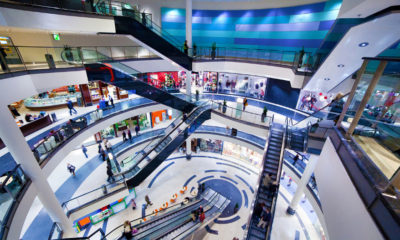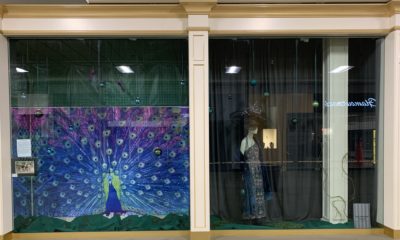THE “CLICKS TO BRICKS” (C2B) movement is gaining significant momentum. It wasn’t long ago that only a handful of direct to consumer brands (DTC) expanded into the physical retail space. Today, dozens have ventured from an entirely digital presence to opening brick-and-mortar locations.
Even with COVID-19 procedures and the uncertainty around re-opening measures, the C2B model has advantages over traditional retail, especially in providing a seamless integration between online and retail shopping. Due to the lack of available real data about consumers who shopped both on a brand’s digital online site and at its physical retail store, BHDP Architecture (Cincinnati) initiated research to learn more about shoppers’ online and retail store behaviors. The data uncovered offers both C2B and traditional retailers invaluable insights into the behaviors of these shoppers.
BHDP crafted a research hypothesis, developed the questionnaire, and engaged an independent, online market research firm to gather input from 1000 U.S. shoppers between February and March 2020. These shoppers were older than 18 and had previous or current experience shopping either online or in a retail store from a list of established C2B retail brands in the clothing, eyewear, cosmetics, jewelry and sleep product categories that have recently moved into the brick-and-mortar space. The brands included Adore Me, Alex and Ani, Allbirds, Athleta, Blue Nile, Bonobos, Casper, Everlane, Glossier, Indochino, Thirdlove, Untuckit and Warby Parker.
The main objectives of this study included:
1. Uncovering the influences and differences in shopper behaviors when shopping on a brand’s online site and at their brick-and-mortar retail stores.
2. Understanding C2B shopper perceptions relative to the translation of a digitally native brand from online to offline.
Advertisement
3. Identifying opportunities to enhance the in-store experience and better align it with the online brand experience.
Research Findings
After analyzing the data, it’s unsurprising that the majority of shoppers who completed this questionnaire made their first purchase from the participating retailers via online. While one-half of these C2B shoppers prefer to shop online, it appears that many are embracing the C2B brand’s physical presence with 23 percent of them indicating they now prefer to shop in store.
Of those shoppers who would rather shop in store instead of online, 59 percent wanted the ability to compare and confirm specifics such as fit, color and texture, while 48 percent were influenced by convenient store locations and 41 percent liked the instant gratification of being able to leave with the purchased item. One shopper said, “They should have a wide variety of styles, colors and sizes,” while another stated, “I expect exclusive products, a wide selection of products, convenience and fair prices.” One shopper, who liked being able to shop and have the item the same day, said, “I also like seeing the textures and experiencing the vibe of the store.”
On the other hand, shoppers preferring online shopping selected the no-hassle appeal of virtual shopping (no crowds, parking issues or drive time) as their number one reason for using technology to shop. They also identified the lack of conveniently located stores as a negative for in-store shopping and cited the larger inventory of online platforms (compared to brick-and-mortar retail shops) and the ease of finding clearance or sale items as positives for online shopping. Overall, shoppers expect that items will be the same price and quality whether purchased online or in a retail store. They also expect the retail store to offer similar return policies and customer service as compared to the online site.
While shoppers definitely have online shopping preferences, it is still important to understand why shoppers choose to visit a retail store after making an online purchase from the same brand. Fifty-seven percent of those surveyed shopped at the brand’s retail store after purchasing from their online site. The ability to try on the merchandise is a major influencer for shoppers visiting physical stores. Of those who chose to shop at a retail store after making an online purchase, 53 percent wanted to inspect the merchandise, while 37 percent had an interest in seeing how the in-store brand was expressed. Shoppers expect the brand image to be carried over to the retail store and that the store feels like a full shop and not one that is empty or only carries limited products. One shopper stated, “It should be nice and resemble your online shopping experience,” and another explained, “I expect there to be perks to encourage me to shop in store instead of online, like helpful representatives and the ability to try on products.”
Advertisement
The C2B shopping experience also can influence shoppers to peruse the brand’s online site after making an in-store purchase. Of those surveyed, 68 percent shopped online after purchasing from a brand’s retail store. Many cited inconvenient store location (43 percent), low inventory or weak product assortment (32 percent) and limited store hours (29 percent) as reasons for shopping online. “It’s just that shopping online is more convenient,” said one shopper. Another expressed that the retail store “didn’t have the item I was looking for,” and one shopper explained, “[I] was looking for a certain item and found it online instead.”
The research also collected information about how shoppers felt about both the in-store and online experiences. Almost three-quarters (69 percent) of shoppers who shopped at the brands’ retail stores after making an online purchase believed that the in-store brand matched the online brand. This was primarily due to product availability (63 percent) and the décor or aesthetics of the retail space (33 percent).
“I expect the in-store aesthetic to be similar to the colors and design of the website,” said one shopper. Another shopper liked the in-store messaging and explained, “[The] mirror that said, ‘You look good,’ emphasized values of brand in the store creatively, not limited to their online presence.” The majority of these shoppers (89 percent) were extremely or somewhat satisfied with their in-store experience compared to their online experience. “Found exactly what I was looking for, and if I couldn’t, staff was happy to help. Much like search bar online,” said one shopper. Less than 2 percent of shoppers were somewhat or extremely unsatisfied with their in-store experience. The vast majority of shoppers who had a negative in-store experience were disappointed in the brick-and-mortar store’s product availability. “A better variety of products online than in store,” said one shopper while another stated, “There has to be a big reason for me to go into the store.”
Half of these C2B shoppers stated that access to in-store personalized customer service affects their decision to visit a brick-and-mortar store. Shoppers are fairly divided about how much personal attention they want from sales representatives when shopping in store. Forty percent said it varies by what they’re purchasing, 36 percent want minimal attention and 23 percent preferred one-on-one customer service. However, 5 percent of shoppers said it is important to be able to order online from a sales representative while shopping in store.
Only 22 percent of online shoppers indicated they would not shop in store if there was a retail store in their region, while 50 percent of online shoppers preferred to shop in store and 28 percent said that it makes no difference. Travel time to a retail store impacts their decision whether to shop in store or online, with 7 percent tolerating a 30-minute or less trip to the retail store.
Although this raw data presents interesting facts and figures as it stands alone, the true value emerges when context is added and the shopper behaviors become tools for successful retail store design. As mentioned prior, a team of retail strategists and store designers at BHDP analyzed the survey’s findings and synthesized the most relevant data into a strategic roadmap for retailers. The analysis and recommendations will be offered as follow-up to this piece.
Advertisement
Read the second installment of this two-part series.

 Headlines1 week ago
Headlines1 week ago
 Photo Gallery22 hours ago
Photo Gallery22 hours ago
 Headlines2 weeks ago
Headlines2 weeks ago
 Headlines2 weeks ago
Headlines2 weeks ago
 Sector Spotlight1 week ago
Sector Spotlight1 week ago
 Headlines1 week ago
Headlines1 week ago
 Headlines2 weeks ago
Headlines2 weeks ago
 Headlines1 week ago
Headlines1 week ago




















